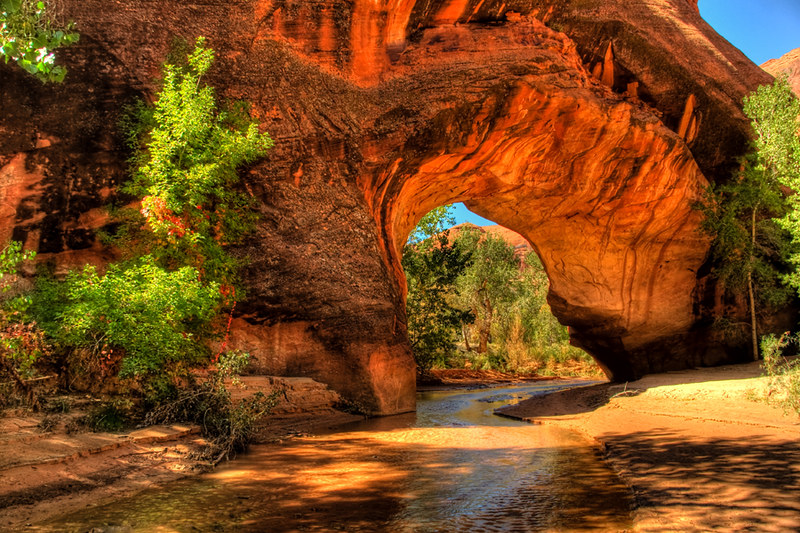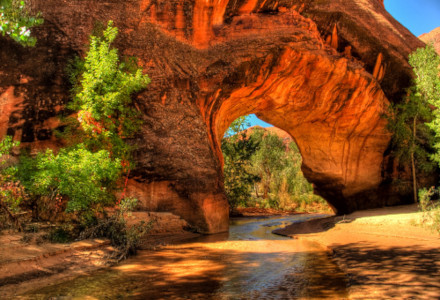
Coyote Gulch Facts
- The breathtaking Coyote Gulch is a rather small tributary of a much larger river, known for its incredible geological features.
- Although the current water flow through the gulch amounts to no more than a trickle, over time it carved marvelous features.
- Furthermore, the astonishing Spooky Gulch, itself a wonder of Nature, represents one of the many marvels of the site.
- The location has become a popular tourist destination, despite rough terrain and is rather difficult to access.
- Thankfully, its entire length resides in a combination of several National Parks and protected areas.
Related Articles
Coyote Gulch Physical Description
The stunning Coyote Gulch itself measures a rather impressive 25 mi (40 km) in overall length, although its course roams extensively.
Its headwaters originate in a 14-mile (23 km) long section of a large, nearby plateau, which formed during the Cretaceous Period.
The streambed remains quite sandy, and the small trickle of water flowing through it rarely measures more than 2 in (5 cm) deep.
At its deepest, this gorgeous canyon has a depth of roughly 900 ft (270 m), though the great majority of its length measures significantly less.
Coyote Gulch Location and Geology
The mesmerizing Coyote Gulch formed in what we now know as the state of Utah, in the United States, in North America.
This work of Nature boasts an astonishing array of natural features, like a world unto itself.
In addition to Spooky Gulch, a visitor finds beautiful arches and natural bridges, some of which are quite large.
Another of these represents a most unusual, jug-style arch in the north wall of the canyon, known as Cliff Arch.
Also, portions of the length of the stream remain lined with small trees and numerous bushes and other small forms of plant life.
Finally, numerous small but beautiful waterfalls formed within the canyon, further adding to its already wondrous beauty.
Features Sharing Its Area
Check out our other articles on Wallace’s Flying Frog, Jeju Island, Borneo Bay Cat, 10 Extraordinary iles

